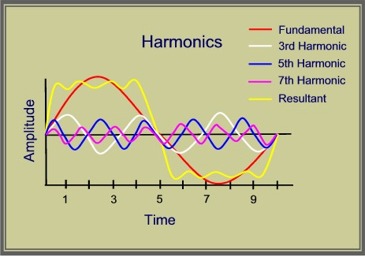Mathematics exists in many case of our life , and many happening have mathematical reasons; we can distinct different parts sound by it , and our feel (dissonance and consonance) depend on it and…
The answer is hidden under a concept that named Harmonics. Harmonics caused many different sections in music; most of what follows, was discovered by Herman Helmholtz in 19th century;
In physics, Harmonics are at proportional frequencies, and at inversely proportional amplitudes.
The other word we can describe it by the lowest frequency that called Fundamental; the other tones are called Overtones; if the overtones have frequencies that are whole number multiples (x2, x3, x4,…, x14) of the Fundamental frequency, they are called harmonics.

If you play a "A" (440hz) with full harmonics , you won't only hear the 440hz tone.because it also has 880hz tone at half the volume (first harmonic) , a 1320hz tone at a third the volume (second harmonic), a 1760hz tone at a quarter of the volume (third harmonic) , and so on.these tones follows until the frequencies get too high or the volume gets too low to be heard...
The next posts of this article will discuss on other parts of harmonics and its results.